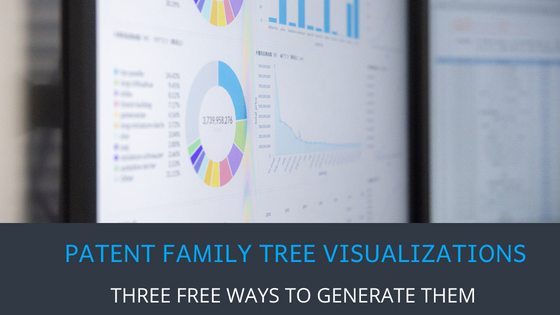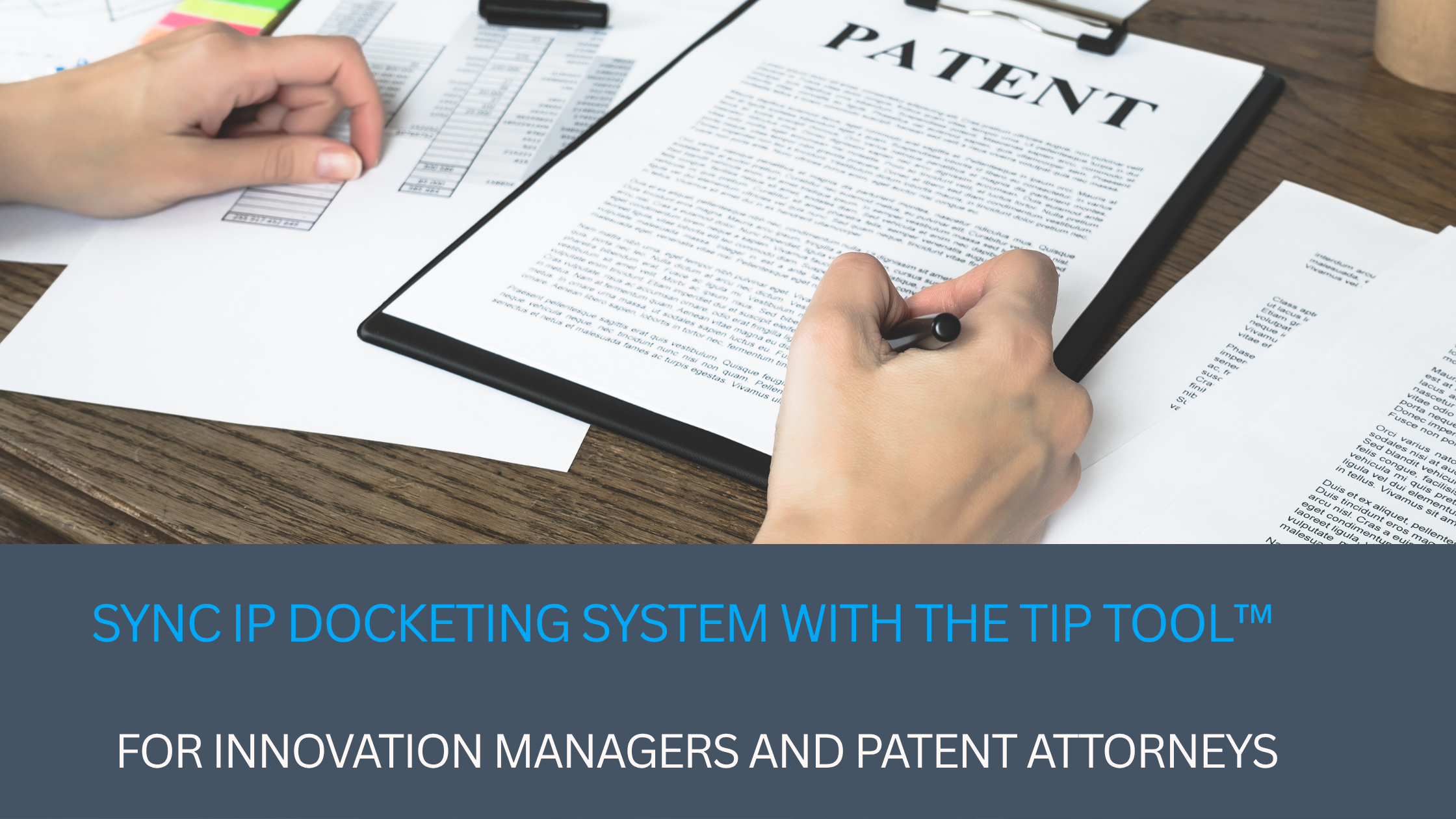Presently, the creation of patent family tree visualizations falls on the shoulders of patent lawyers and their paralegals, a process that involves extensive manual labor.
This often involves reviewing online patent databases and parsing priority claims; a task made all the more difficult by the potential for incomplete records. To streamline this labor-intensive process, understanding the structure and utility of patent family trees and their generators is invaluable.
To ensure a thorough and accurate representation, a skilled practitioner would also take the time to review the application cover sheet and transmittal, as well as the priority claims contained within the application itself.
However, despite the best efforts of these professionals, it is not uncommon for important priority documents or relationships to be overlooked.
There may also be costs associated with obtaining copies of patent documents and accessing information about patents and their family members.
So if you can find a free way to plot patent family trees that offer global coverage across multiple jurisdictions in a visually engaging way–you are all set.
Three Free Tools to Generate Patent Family Tree Visualizations
For your convenience here are three free tools you can choose from to generate patent family trees. Each of these free tools offer different benefits in terms of coverage, intuitive visualization like a Gantt chart, easy access to additional information while analyzing family trees, etc.
For enterprises managing extensive patent portfolios, leveraging top enterprise innovation software can significantly enhance this analytical capability.
- The TIP ToolTM by Triangle IP provides both traditional and Gantt visualizations for the patent or application of interest with all the required details about the family members
- Patentscope by WIPO provides a free visualization tool that plots a broad family tree but lacks the deeper details
- Espacenet by European Patent Office provides a free table with records from the application’s family tree but does not provide a visualization
Let’s go a level deeper to understand the benefits of each of these free tools to ease the tool selection process.
The TIP Tool™ by Triangle IP
The TIP Tool™ provides a suite of functions for medium-sized enterprises to systematize their patent mining processes. To create a patent family tree, you access the TIP Tool™ dashboard and select “Portfolio Manager.”
Select “Add patent applications” to retrieve patent application data and choose the patent once the data refreshes under the “Filed applications” tab. There, you can view the selected patent’s family tree. The family tree can optionally include non-public information from Private PAIR if you have an account with the USPTO and access to Triangle IP.
Adding a Patent or Patent Application to the Portfolio Manager
Continuity Data Visualization as Gantt Chart
The patent family tree visualization software displays the family tree as a Gantt chart. You can instantly identify the relationships between applications by looking at the bars. Each bar represents a separate application. The location and length of the bars show the priority date, filing date, pendency period and the issue date. It also shows the duration of the time overlap between applications.
The subject application is displayed in bold. Priority applications are identified by the type of application they represent, with PRO identifying provisional applications and CON identifying continuation applications.
Colors distinguish the different phases of a patent application, with blue showing the pendency of pending applications and green showing the patent term of issued patents. The length of the bars also shows when issued patents will expire and when pending applications would expire, if issued. This helps you plan whether and when to file continuing applications based on the patent term you could receive.
You can gather information quickly through flags and deep links that provide detail about each application or patent.
The display is not cluttered because the Gantt chart only shows applications with direct priority claims and not indirect claims through other priority documents. For example, if you do not claim the grandparent application, it will not show up on the chart even though it provided priority for the parent application.
Gantt Chart like Patent Family Tree Visualization in the TIP ToolTM
Family Tree Visualization in the TIP Tool™
The TIP Tool™ Patent Family Tree provides two distinct visualizations—the Modern view and the Classic view—to help users analyze patent family relationships effectively. Each view presents patent relationships differently, allowing users to choose the format that best suits their needs.
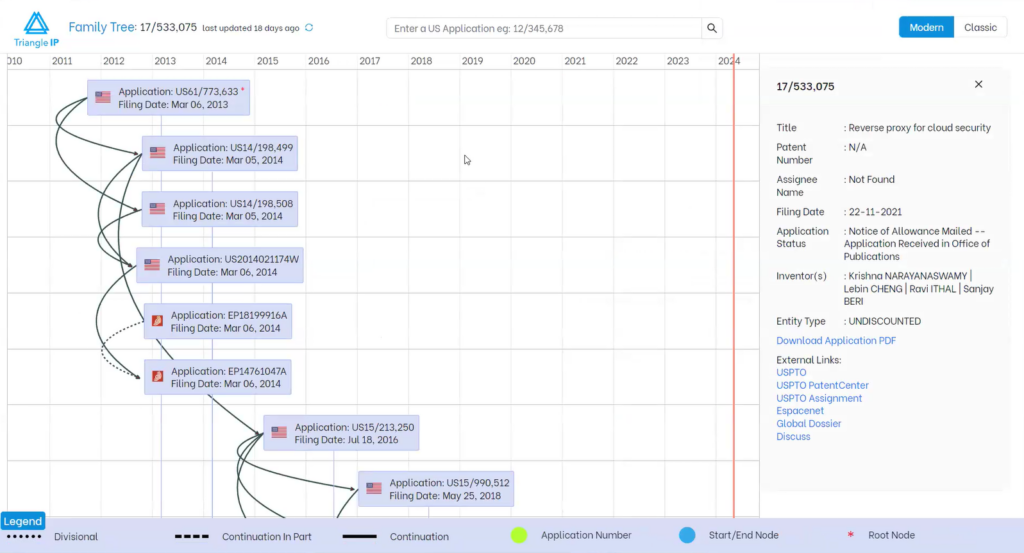
‘Modern’ Family Tree visualization of Patent Portfolios in the TIP ToolTM
The Modern view arranges patent applications along a timeline, showing how they are connected based on priority dates, filing dates, and issue dates. This layout makes it easier to track pendency periods and expected expirations, helping users make strategic decisions regarding continuation filings.
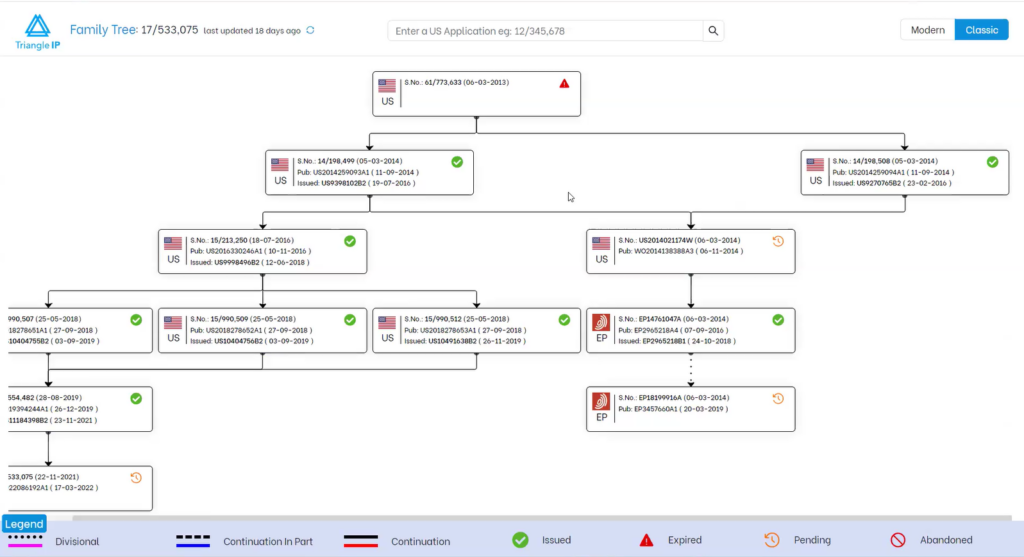
New ‘Classic’ Family Tree Visualization of Patent Portfolios in the TIP ToolTM
The Classic view presents a genealogical-style representation of patent families, focusing on parent-child relationships using arrows to visually map continuation, divisional, and continuation-in-part applications. Unlike the Modern view, which emphasizes timing, the Classic view provides a clearer picture of family structure, making it easier to trace direct and indirect priority claims.
To enhance clarity, the Classic view uses different line styles to distinguish relationships:
- Small dotted lines for divisional applications
- Dashed lines for continuation-in-part applications
- Solid lines for continuation applications
Additionally, color-coded status indicators help users quickly identify the stage of each application:
- Green for issued patents
- Yellow for pending applications
- Gray for expired patents
Users can also access detailed bibliographic data, including serial numbers, publication numbers, issue dates, and other filing details. Clicking on an application provides further information such as the patent number, assignee name, filing date, and inventors, along with external links and downloadable PDFs.
By offering both a structured timeline-based view and a traditional family tree format, the TIP Tool™ provides a flexible and intuitive way to analyze patent portfolios. Users can choose the visualization that best aligns with their workflow, ensuring a clear understanding of complex patent relationships.
Patentscope
Patentscope is a public database maintained by the World Intellectual Property Organization (WIPO). It covers all patent applications and issued patents from Patent Cooperation Treaty members, including the patent offices of Europe, Japan, and the U.S.
You create patent family tree visualizations by accessing Patentscope. Select “ID/Number” in the search box, enter the patent application number, and open the chosen patent application. Patentscope gives you the option to select “Patent Family” to view the selected patent’s family tree.
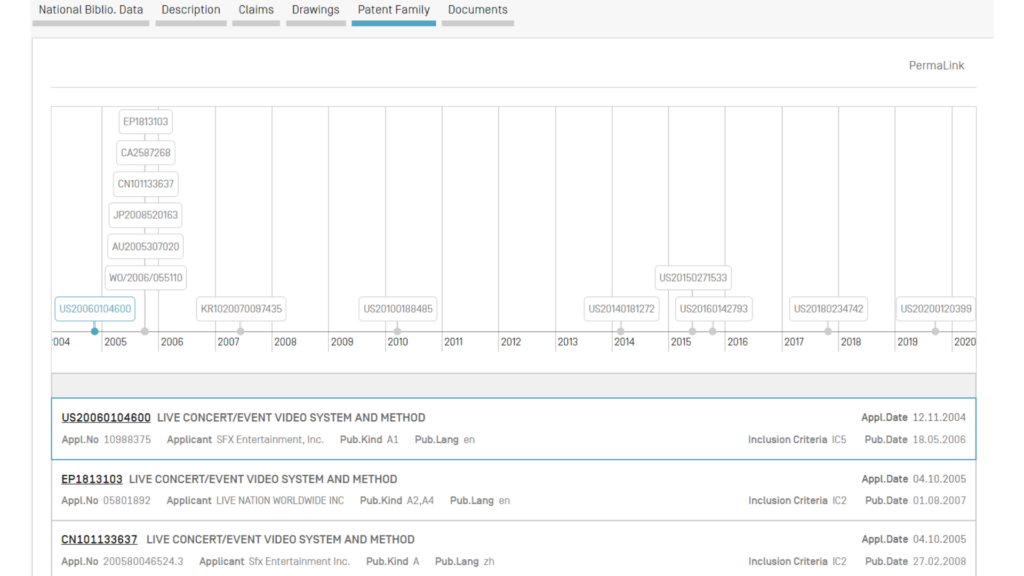
The family tree appears on a static timeline. Each bar in the patent family tree corresponds to the relevant dates associated with the application. The priority document appears in blue.
Patentscope gives a clear visualization that presents the dates of application and publication in chronological order below the family tree. The tree also shows the relationships between applications. Each document number links to the corresponding publication in the WIPO database.
Patentscope does suffer from some drawbacks. The details of a document do not appear when the user hovers over the document’s entry on the tree. Instead, you must use the text list to understand the relationships. As a result, the relationships between documents are not necessarily clear from the visualization. Also, the timeline has a fixed scale that you cannot shrink.
Espacenet
Espacenet is a patent database maintained by the European Patent Office (EPO). To create patent family tree visualizations, you go to the Espacenet search page and enter the patent application number. View the results and open the desired patent application. Select “Patent Family” and “INPADOC Family” to view the selected application’s family tree.
The family tree from Espacenet appears as static tabs. In Espacenet, patent family trees are integrated into the main menu, so users do not need to shuffle between different formats to reach the family tree information. And the tree shows the entire patent family tree in a chronological list.
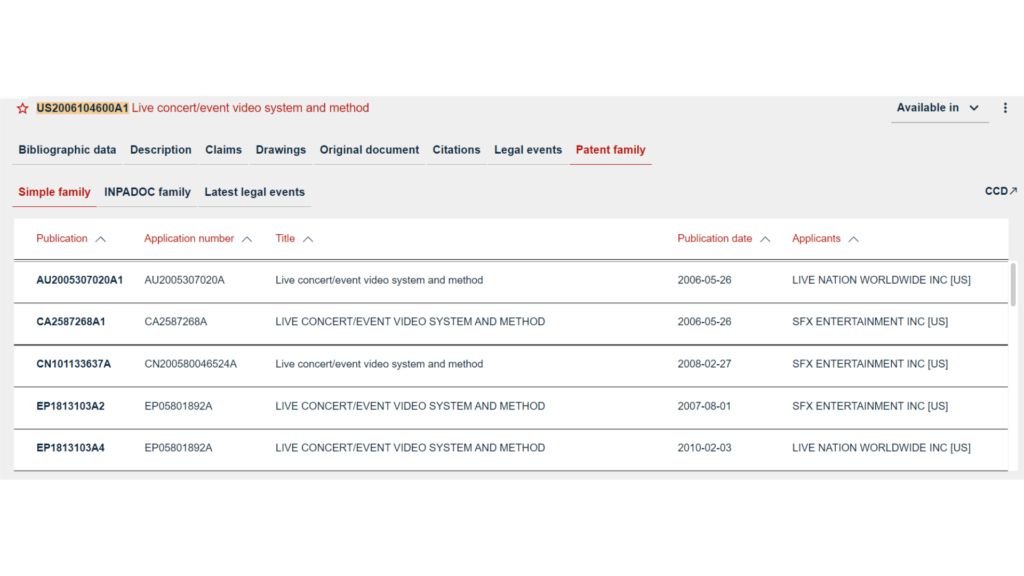
But Espacenet does not provide a visualization of the applications. This inhibits you from understanding the parent-child relationships between the application of interest and other issued patents and pending applications at a glance. Instead, you must read the tabs.
Unraveling Complex Relationships with Patent Family Tree Visualizations
Complex technologies are often covered by complex networks of related patent applications. Using the right patent family tree visualization software can instantly give you the information you need during patent planning, preparation, and prosecution.
Some important features to consider include the flexibility and usefulness of the displays, ease of accessing detailed information, and intuitiveness of the information presented. Based on these criteria, the TIP Tool™ by Triangle IP edges out the competition. The tool’s visualizations provide detailed and useful information in a simple and intuitive visualization.
To see the TIP Tool™ patent family tree visualizations for yourself, access the free demo playground. This demo will generate a patent family tree for any document available in Public PAIR to preview what you will see from your Private PAIR account on the TIP Tool™.

